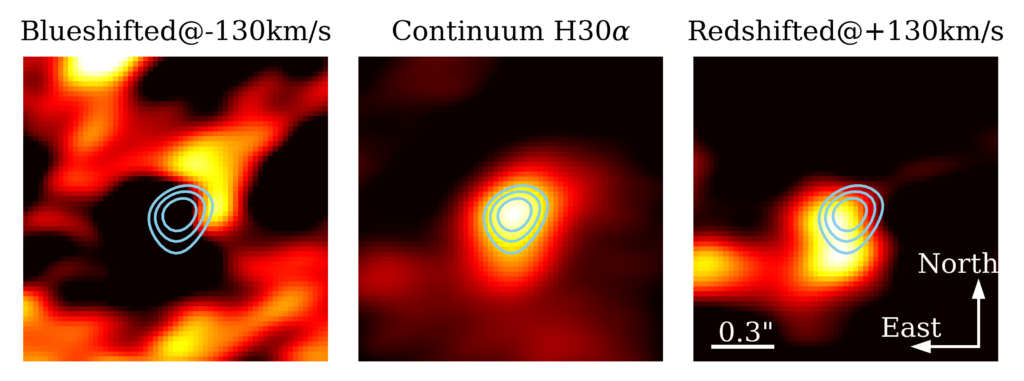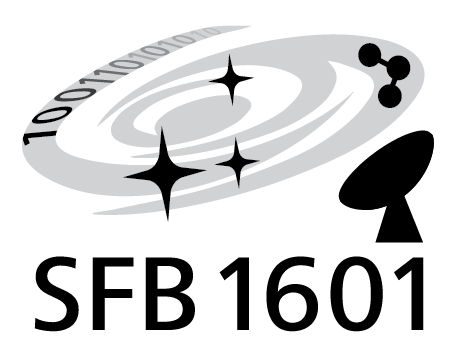October 30, 2023
Timea Csengeri
Laboratoire d’Astrophysique de Bordeaux (CNRS)
The world of hot cores uncovered by ALMA-IMF: exploring the emergence of complex organic molecules
Abstract
Complex organic molecules (COMs) are characteristic of the chemical complexification of the star forming gas, yet we still have a poor understanding about the chemical evolution of the collapsing gas. The ALMA-IMF Large program targets 15 of the most prominent Galactic protoclusters over various evolutionary stages. Beyond the rich core population uncovered by ALMA-IMF, we identified a sample of ~70 hot core candidates using methyl formate lines. I will discuss our main results about the statistics of these chemically active sites obtained from ALMA-IMF. Our findings suggest that the most massive cores are all associated with methyl formate emission, demonstrating that all massive cores undergo a chemically active phase. Our hot core candidates exhibit emission in a variety of COMs underlying the complex chemistry associated with sites where hot cores emerge. Furthermore, I will introduce the recently accepted NASCENT-Stars large program that offers a more complete view on the molecular composition of the star forming gas using the NOEMA interferometer. I will put in context these results with our understanding of the global molecular diversity of hot cores and hot corino like objects, and discuss the origin of COMs.
(Cologne, Host: Peter Schilke)
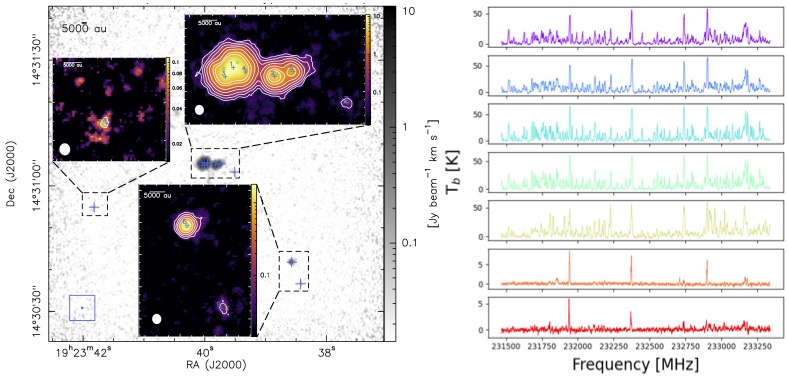
November 13, 2023
Sara Rezaei Khoshbakht
Chalmers-MPIA cosmic origins fellow
Multi-scale 3D structure of the Milky Way
Abstract
Star formation properties are linked to complex distributions of gas and dust in galaxies over a wide range of scales; from internal cloud substructures to kilo-parsec, galactic scales.The Milky Way galaxy is currently the only place where studying individual stars and substructures within individual clouds is possible. However, our position within the dusty disc of the Milky Way has long limited our understanding of the location and substructures of star-forming regions to the 2D plane-of-the-sky views and uncertain kinematic distances. The latest Gaia data release (Gaia DR3) and near-infrared datasets (e.g. 2MASS, WISE, APOGEE) have recently enabled us to study the Milky Way in three dimensions.
In this colloquium, I will introduce you to the world of 3D dust mapping and present our Gaussian process-based 3D mapping technique. I will then showcase some of our work on detailed 3D maps of the local star-forming regions, as well as a large-scale 3D map of the Milky Way disc out to 10 kpc. This gives us a tremendous opportunity to study and connect physical processes simultaneously acting on different scales and to study the Milky Way as a multi-scale, stand-alone system.
(Cologne, Hosts: Hamedani-Golshan, Schilke)
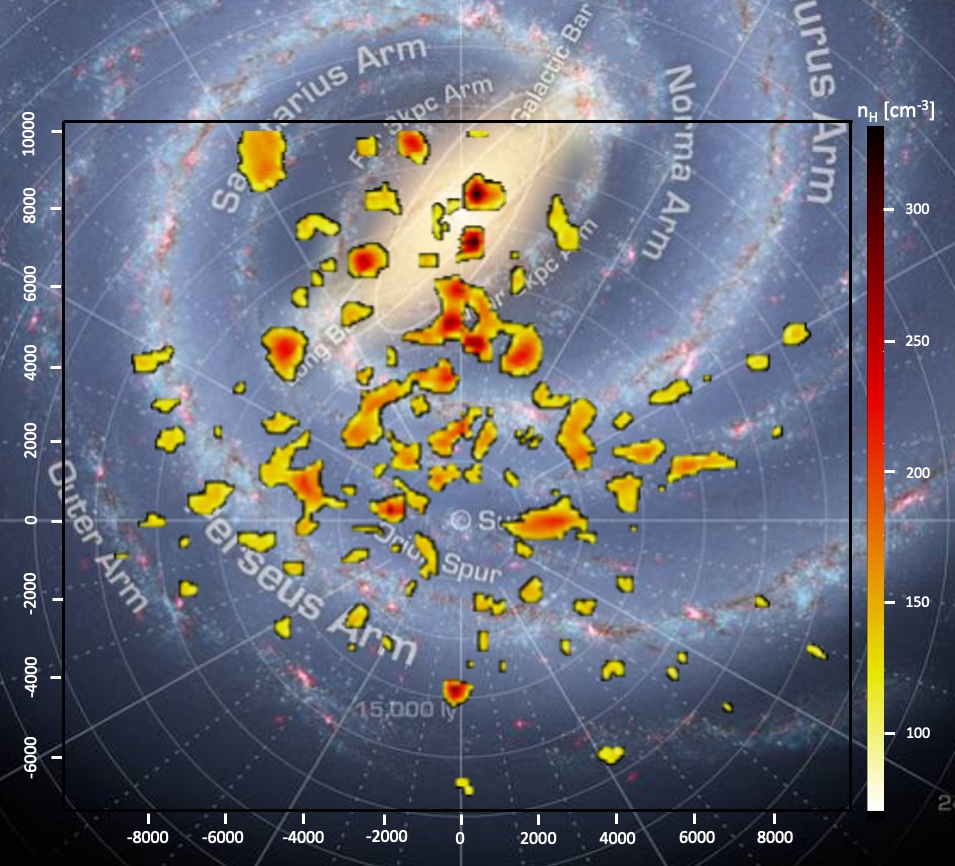
November 20, 2023
Pascal Oesch
Department of Astronomy, University of Geneva
On the Search of the First Galaxies with the JWST
Abstract
The first deep images with the James Webb Space Telescope (JWST) have transformed our view of the Universe. With its unparalleled imaging and spectroscopic capabilities, JWST finally provides deep restframe optical observations to z=10 — a huge leap from the current z=3. Additionally, JWST immediately extended our cosmic horizon into uncharted territory, with galaxy candidates now identified out to z~14-16, only ~250-300 Myr after the Big Bang. We are thus at the brink of finding the first galaxies that ended the cosmic Dark Ages and started the reionization of the Universe. In this talk, I will show how far we have come in understanding early galaxy build-up over the last years. I will start with the state of knowledge from three decades of Hubble and Spitzer Space Telescope datasets before JWST, and will then present an overview of our current understanding of early galaxies based on early results from the first year of JWST observations.
(Bonn, Host: Cristiano Porciani)
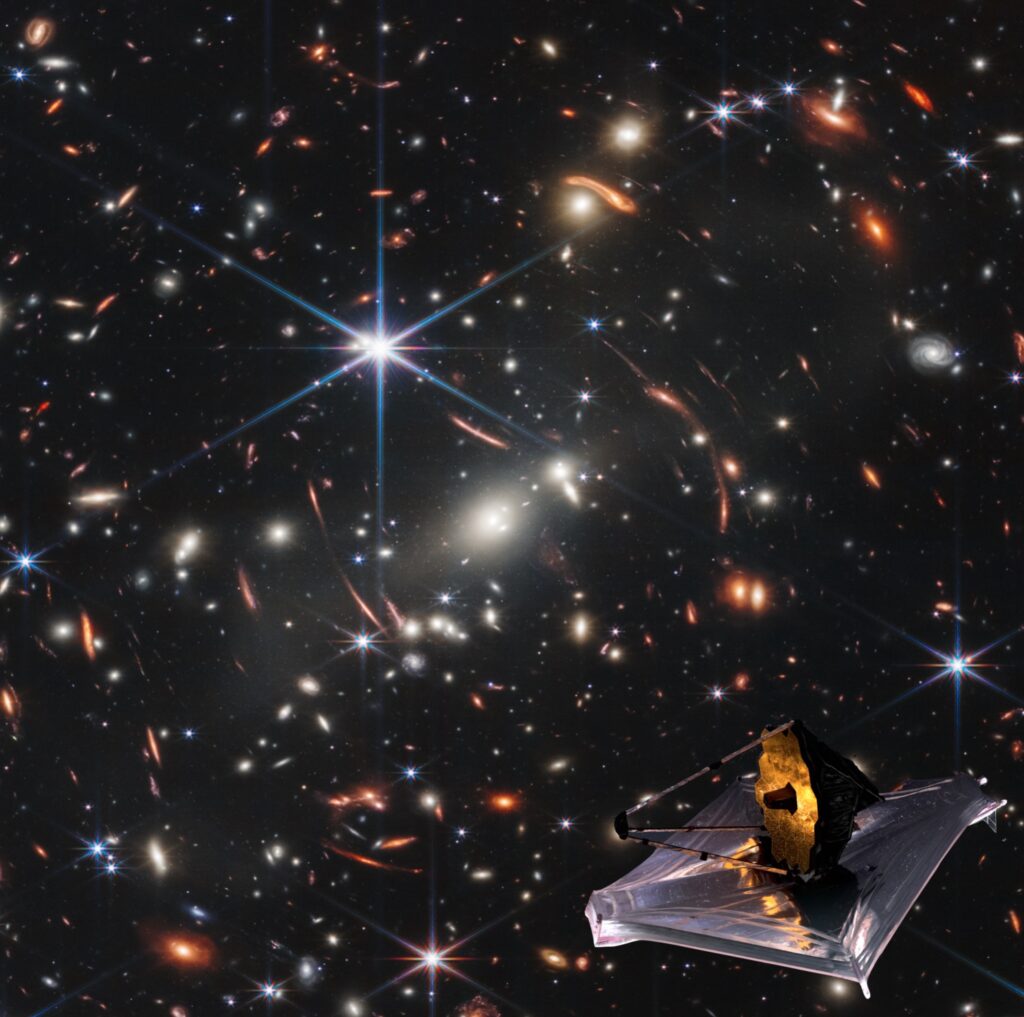
November 27, 2023
Daniel Whalen
Institute of Cosmology and Gravitation, University of Portsmouth
The Origin of the First Quasars
Abstract
Although supermassive black holes (SMBHs) have been found at the centers of most massive galaxies today, quasars powered by billion solar-mass BHs have now been discovered at redshifts z = 7.6, less than 690 Myr after the Big Bang. Their discovery posed severe challenges to current paradigms of cosmic structure formation because it was not understood how such massive BHs formed by such early times.
However, new very-high resolution cosmological simulations have now shown how quasars formed by z > 7. I will review current thought about the origin of the first quasars and show how in fact they are an inevitable result of structure formation in cold dark matter cosmologies. Besides showing how the first quasars formed, our simulations also account for their demographics: their numbers at high redshift.
(Cologne, Host: Stefanie Walch-Gassner)

December 18, 2023
Brian Hays
re-scheduled to summer semester 2024
Abstract
Astronomical observations of molecules are buoyed by laboratory astrophysics investigations of a variety of processes. Observations of the interstellar medium need spectral line positions to find molecules, rates of reaction to explain to feed chemical models, and collisional (de)excitation rates to predict the abundance of molecules under the peculiar conditions of space. Laboratory astrophysics measurements or predictions can provide all this information using a wide variety of techniques. Given the strong link between rotational spectroscopy and astrochemistry through several microwave, millimeter, and sub-millimeter telescopes, the role of rotational spectroscopy can be expanded beyond its traditional role of providing spectral line positions in laboratory measurements. I will discuss new experiments that push rotational spectroscopy into the detection of products of reaction and validation of collisional (de)excitation rates all in support of astrochemistry.
(Cologne, Host: Stephan Schlemmer)
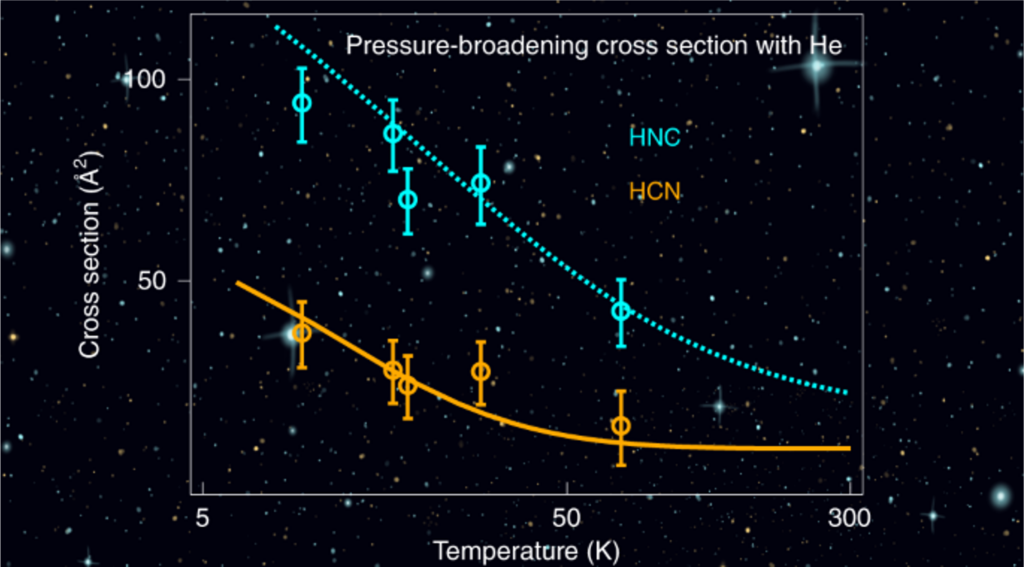
January 8, 2024
Benjamin Godard
Observatoire de Paris & Laboratoire de Physique de l’Ecole Normale Supérieure
Phase transition shocks in the Warm Neutral Medium: Origin of Carbon at high pressure
Abstract
The diffuse interstellar medium is full of chemical mysteries. One of those is the presence of substantial amounts of neutral Carbon at high pressure (one to two orders of magnitude above the mean pressure) in all directions in the galaxy (Jenkins & Tripp 2011). We propose that this feature results from the propagation of high velocity shocks (40 km s-1 < V < 200 km s-1) in the warm neutral medium. Such shocks, which incidentally induce phase transition between the warm neutral medium and the cold neutral medium, provide all the necessary conditions to explain optical observations including the excitation conditions and the line profiles of CI. The comparison between models and observations leads to a precise estimation of the distribution of the injection rate of mechanical energy at large scale (few tens of pc). This distribution is found to be in excellent agreement with the expected distribution of injection rates induced by supernovae explosions in the solar neighborhood and to show a puzzling similarity with the distribution of the kinetic energy transfer rate deduced from CO observations (Hennebelle & Falgarone 2012, Miville-Deschênes et al. 2017). This work provides a new evidence of the connection between the injection mechanisms and the transfer of energy in the turbulent cascade that develops across the warm and cold phases of the interstellar matter.
(Cologne, Host: Peter Schilke)
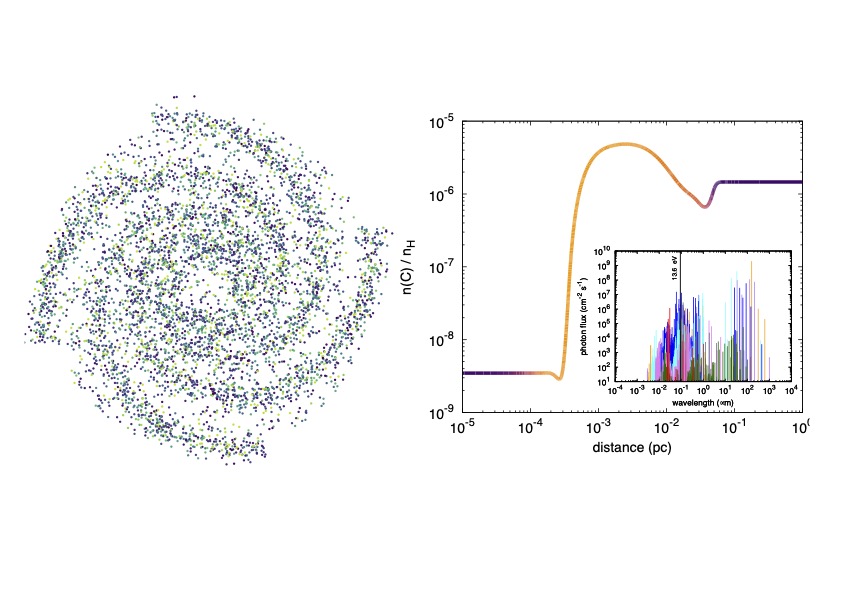
January 15, 2024
CRC 1601 Sustainability Board
Volker Ossenkopf-Okada, Sven Thorwirth, Frank Lewen
How to turn the CRC1601 more sustainable?
Abstract
The presentation of the CRC Sustainability Board discusses why our current approach in research is part of the global problem of putting humanity beyond the boundaries of safe operations within the finite terrestrial system. In particular the extensive emission of greenhouse gases, leading to a rise of global temperatures has not only negative effects on nature, humans, and societies, but also a direct impact on astronomical observations. Based on preliminary numbers we can quantify the contribution of our own CRC to the problem.
Solutions are well known as all parts of academia face the same questions. Catalogues of measures and implementation plans exist at many academic institutions so that there is no need to “reinvent the wheel” but the need for local adaptations. All measures need to be based on a rigid accounting, a transparent evaluation and reporting of the status quo and the planned measures. Fundamental changes to traditional approaches are unavoidable.
The CRC has already committed to immediately implement a number of “no-regret” measures directly from the start. The Sustainability Board is responsible for coordinating the evaluation of the environmental impact of the CRC activities, measuring, in particular, the carbon footprint of the research, with the aim to reduce it. Based on this assessment, the board proposes measures to reduce the environmental impact.
The presentation explains possible measures that can be implemented on our side, covering e.g. the installation of photovoltaics, the use of environmentally friendly transportation, the exploitation of new possibilities for virtual meetings and other measures that have been successfully used at other institutions. It will collect ideas from the CRC members with respect to activities that can be done in-house to minimize the environmental impact of our work. Moreover, the discussion should address the major obstacles in the current work of the board such as the resistance against accounting at the university level and and ways to recruit new active members also from the institutes in Bonn
January 22, 2024
Annalisa Pillepich
Max Planck Institute for Astronomy, Heidelberg
Simulating galaxies and their gaseous components across populations, environments and cosmic epochs
Abstract
A couple of decades ago it has been realized that energy injections from stars and super massive black holes (SMBHs) are essential processes to model galaxies that resemble observed ones. Modern large-volume cosmological simulations of galaxies, such as Illustris, EAGLE, HorizonAGN and others, are now capable of producing more or less realistic galaxies, especially in relation to their stellar components. However, feedback mechanisms are known to leave more direct imprints on the properties of the gas, rather than on the stars. And so, in turn, the cosmic gas is expected to provide more stringent constraints on such feedback processes. In fact, current and future observations are providing progressively more inputs on the thermodynamical, ionization, chemical, magnetic, and kinematical properties of the gaseous atmospheres in and around galaxies. In this talk, I will give an overview on the ever more quantitative and plausible evidences of the role that SMBH feedback has in shaping the gaseous haloes from Milky Way-like galaxies to the most massive galaxy clusters in the Univers. I will do so starting from the outcome of the IllustrisTNG simulations in combination with current and future observational data, e.g. with SDSS, HST, eROSITA and XRISM, and I will introduce a new ambitious project: TNG-Cluster. I will hence discuss and showcase e.g. eROSITA-like bubbles, azimuthal-dependent properties of the circum-galactic medium, jellyfish galaxies, radio relics, turbulence and X-ray surface brightness fluctuations in the intra-cluster medium.
(Cologne, Host: Dominik Riechers)
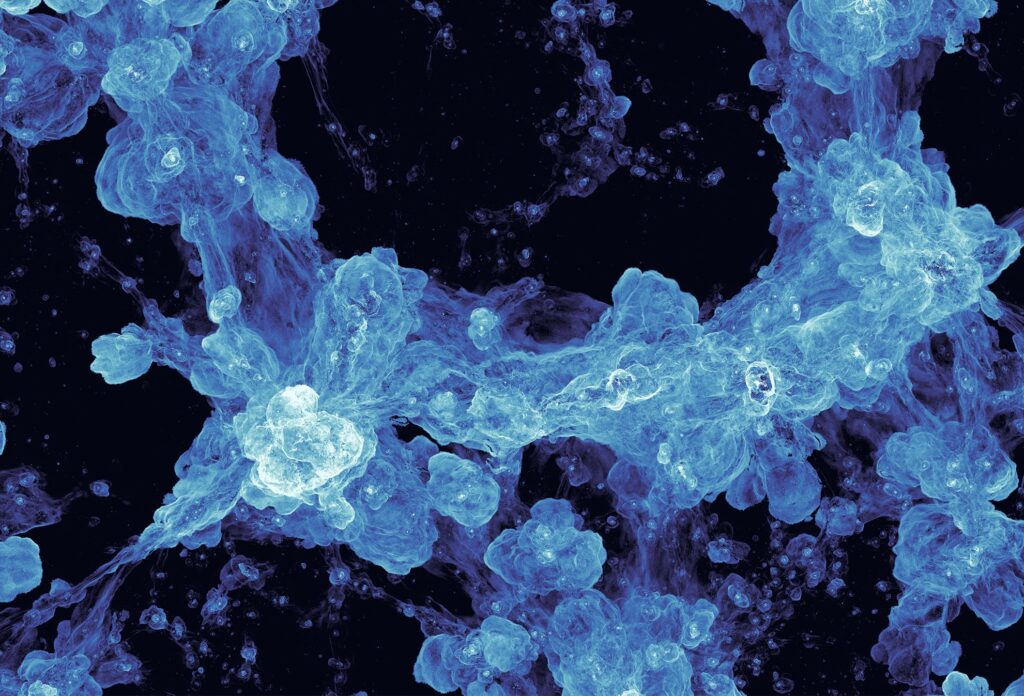
January 29, 2024
Arnaud Belloche
CRC1601 / MPIfR Bonn
Molecular complexity in high-mass star forming regions
Abstract
The search for complex organic molecules (COMs) in the interstellar medium (ISM) has revealed species of ever greater complexity. It is in part motivated by the presence of COMs in comets, whose origin likely goes back to the early phases of the formation of our Solar System. The advent of ALMA and NOEMA has opened a new door to explore molecular complexity in star forming regions. Their high angular resolution reduces the spectral confusion of star forming cores and their increased sensitivity and bandwidth allows the detection of low-abundance molecules that could not be probed before. The complexity of the recently-detected molecules manifests itself not only in terms of number of atoms but also in their molecular structure. I will discuss these developments and present some recent results on COMs derived from the EMoCA and ReMoCA interferometric surveys of Sgr B2(N). I will also introduce our new project that targets star forming regions in the outer Galaxy in order to probe the impact of a reduced metallicity on this complex chemistry.
April 8, 2024
Olivier Berné
CNRS senior scientist, IRAP Research Institute in Astrophysics and Planetology, Toulouse, France
Illuminating planet formation: the role of ultraviolet radiation from massive stars in the physics and chemistry
Abstract
The formation and evolution of (exo-)planets stands as a central question in astronomy, particuarly in the context of the JWST mission. The earliest stages of these processes take place in protoplanetary disks of gas and dust around young stars. It has become clear that most of these disks originate within stellar clusters, subjecting them to intense ultraviolet (UV) radiation from the most massive members of these clusters. Despite its relevance to planet formation theories (our proto-Solar System disk formed in a cluster) very little is known about the role of this external UV radiation in the formation, evolution, and chemical composition of embryonic planetary systems. The unprecedented capabilities of JWST coupled with models relying on laboratory and theoretical spectroscopy now enables us to characterize protoplanetary disks irradiated by UV from the cluster uniquely. In this presentation, I will describe recent advancements in the field, illustrating how UV photons can disrupt the gas within protoplanetary disks, potentially impeding the formation of giant planets, while also serving to activate gas-phase organic chemistry through the formation of the methyl cation, observed for the first time with JWST.
(Cologne, Host: Oskar Asvany)
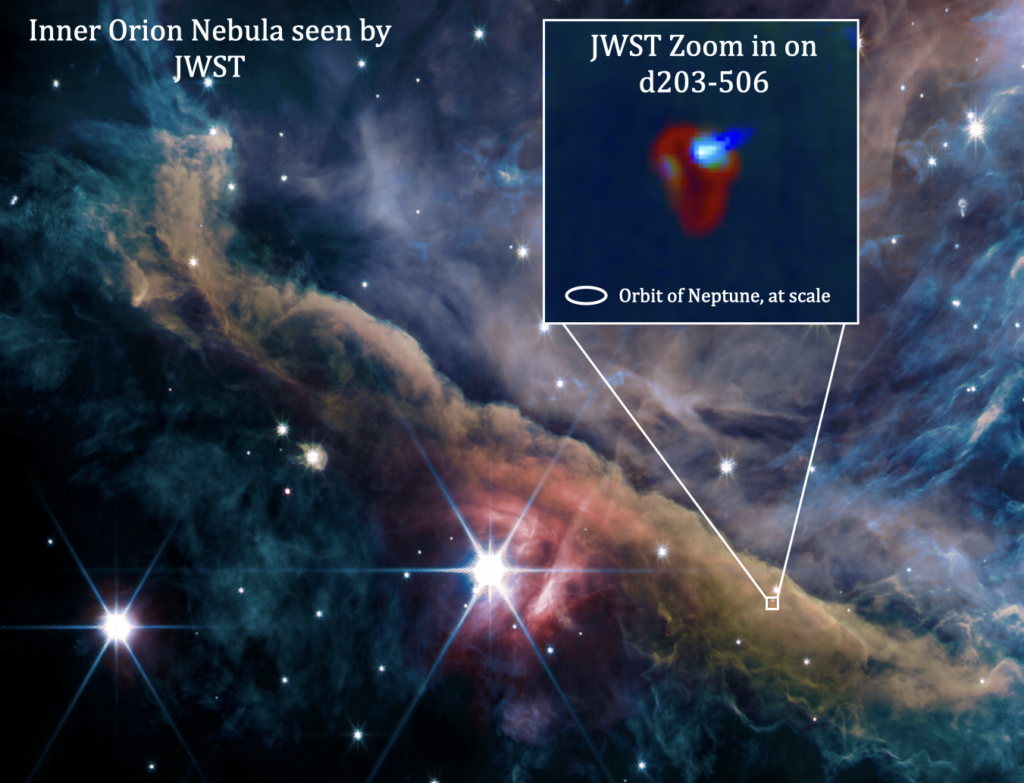
April 15, 2024
Brian Hays
Univ. Lille, CNRS, UMR 8523 – PhLAM – Physique des Lasers Atomes et Molécules, France
Dynamic rotational spectroscopy to investigate gas phase molecular processes relevant to the interstellar medium
Abstract
Astronomical observations of molecules are buoyed by laboratory astrophysics investigations of a variety of processes. Observations of the interstellar medium need spectral line positions to find molecules, rates of reaction to explain to feed chemical models, and collisional (de)excitation rates to predict the abundance of molecules under the peculiar conditions of space. Laboratory astrophysics measurements or predictions can provide all this information using a wide variety of techniques. Given the strong link between rotational spectroscopy and astrochemistry through several microwave, millimeter, and sub-millimeter telescopes, the role of rotational spectroscopy can be expanded beyond its traditional role of providing spectral line positions in laboratory measurements. I will discuss new experiments that push rotational spectroscopy into the detection of products of reaction and validation of collisional (de)excitation rates all in support of astrochemistry.
(Cologne, Host: Stephan Schlemmer)

April 22, 2024
Anthony Whitworth
CHART, School of Physics & Astronomy, Cardiff University, UK
A Star Is Born
Abstract
The commonest stars in the Universe are probably M Dwarfs. This talk is about how M Dwarfs and Sun-like stars might form and why they are so common. I shall try to convince you – and myself – of the following (hypo)theses. [1] Their formation has nothing to do with the Singular Isothermal Sphere. [2] The Sun is a rather massive star, not in the sense that it will ever excite an HII region or explode as a supernova, but in the sense that there are many more stars with lower mass than with higher mass. [3] The Sun is somewhat unusual in being single. [4] The peak of the Core Mass Function at one or two solar masses, and the (low residual) levels of turbulence in prestellar cores, are a consequence of thermodynamics, specifically the interplay between molecular-line cooling and dust cooling. [5] This same thermodynamics explains the threshold for star formation at AV ≳ 8 (Σ ≳ 200 M☉ pc−2), V⊙ and the ubiquity of structures (cores, filaments, sheets) with linear size of order 0.1 pc. [6] A typical prestellar core must spawn between 4 and 5 stars if it is to deliver the observed binary fraction as a function of primary mass, or the proportion of higher-order multiples. [7] The efficiency of star formation in a prestellar core is very high, notionally of order 100%. OK, some of these theses are not very contentious, but I think that some of them might ‘shift the dial’ a little bit.
(Cologne, Host: Stefanie Walch-Gassner)
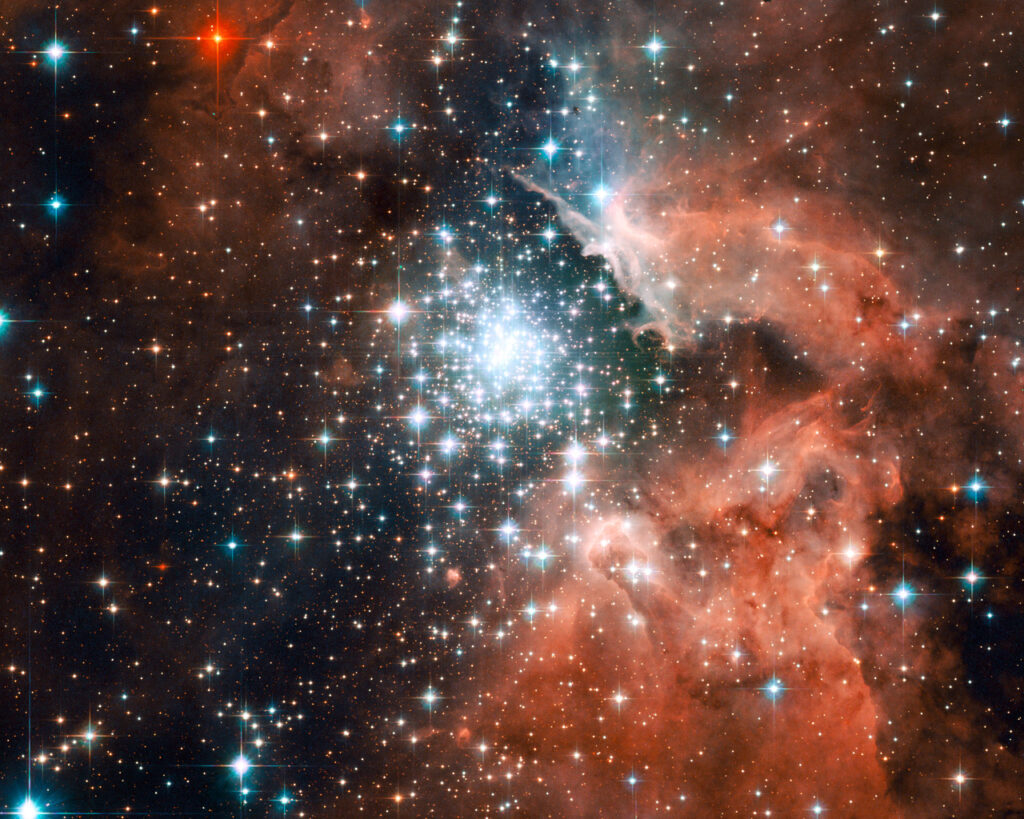
April 29, 2024
Daniel Seifried
I. Physics Institute, University of Cologne
Magnetic fields & Chemistry in 3D, ISM simulations
Abstract
In my talk I will present recent results from state-of-the-art simulations of molecular clouds and star formation. I will focus on the interplay of magnetic fields, turbulence and chemistry and their effect on the structure evolution in clouds and the subsequent star formation process. Specifically, I will show how magnetic field lead to a stabilisation of clouds on larger scales, whereas on smaller scales gravity takes over. I will discuss how this effect is reflected in the chemical composition of the clouds and the structure of magnetic fields. Furthermore, I will present a novel analysis of the 3D morphology of substructures contained in the clouds, which show a intriguing transition from sheet-like structures to filamentary structures, in excellent agreement with recent observations. Lastly, I will connect the results of these simulations to actual observations by discussing synthetic observations created from the simulations. Specifically I will focus on dust polarisation maps and discuss what we can learn from them about the underlying 3D magnetic field structure and how accurately magnetic field properties can be inferred from such observations.
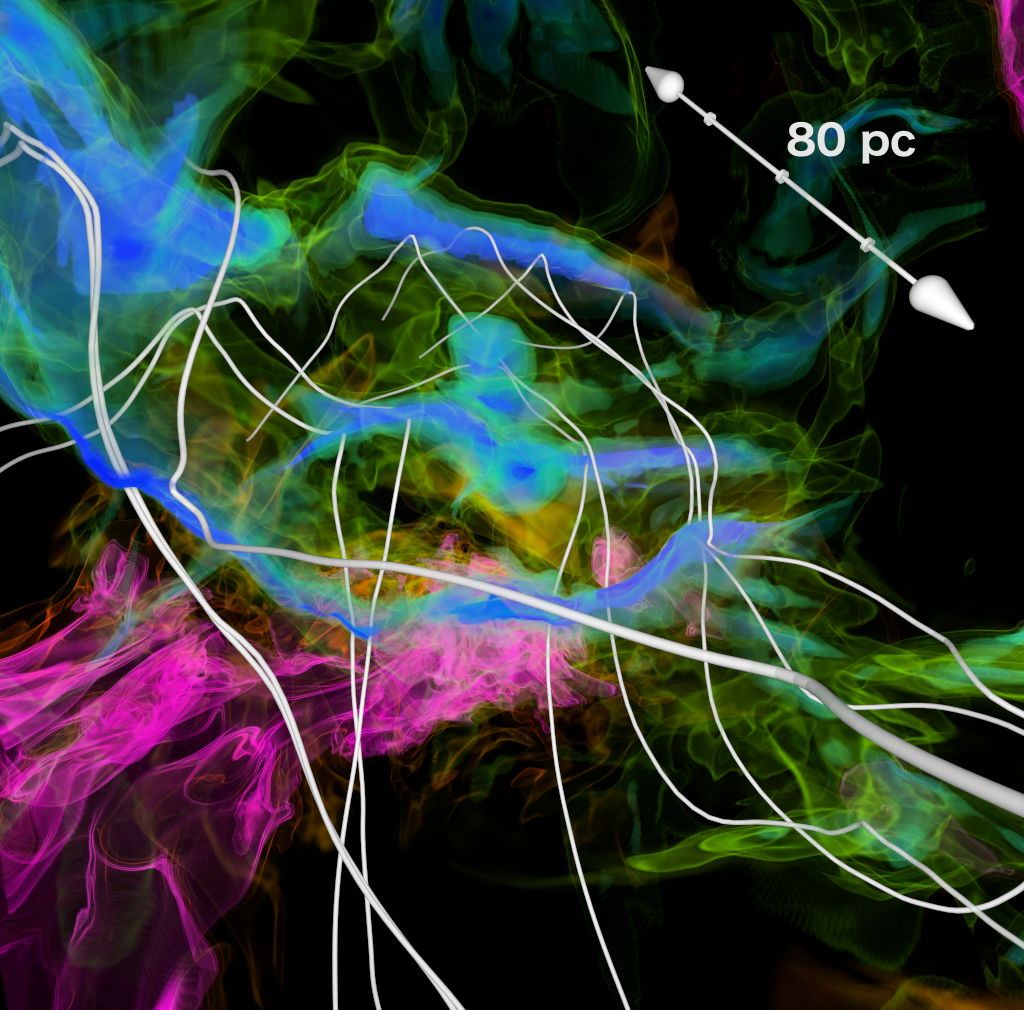
May 6, 2024
Peter Schilke, Beth Jones
I. Physics Institute, University of Cologne
A census of high-mass star-forming regions in the Galaxy with ALMAGAL
Abstract
The ALMA Large Program ALMAGAL has observed over 1000 high-mass star forming clumps and unveiled more than 6000 protostellar cores embedded within. For the first time, homogeneous interferometric spectral line data are now available toward a significant fraction of the total Galactic population of high-mass star formation sites. Determining the properties of protostellar cores within the Galaxy is vital to draw robust conclusions and truly understand the pathway to Galactic high-mass stars.
We present the first results of the survey, concentrating on the determination of temperatures from fitting of methyl cyanide lines. Temperatures are critical for determining important parameters such as luminosity and mass. We then explore the evolutionary state of the protostars, the fraction of clump luminosity powered solely by the cores, and quantify the correlation with other star formation features such as HII regions. Since some ALMAGAL sources are in the lower metallicity outer Galaxy, we also connect to CRC project A1, and to next week’s talk.
The very high spatial resolution of the ALMAGAL data creates challenges of the data fitting and interpretation that are absent in most previous data sets. Hence, we explore Machine Learning methods to recover underlying density and temperature profiles.
(Cologne)
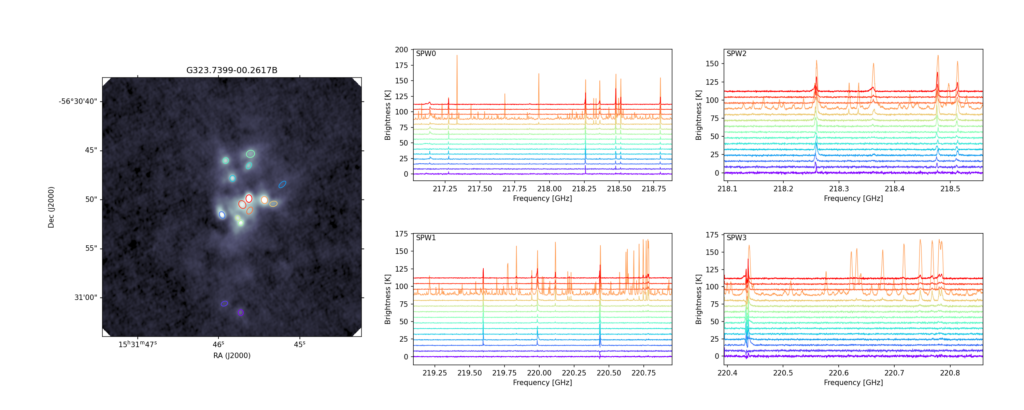
May 13, 2024
Agata Karska, Dario Colombo, Eleonore Dann
Max Planck Institute for Radio Astronomy, Bonn; Argelander Institute for Astronomy, University of Bonn; I. Physics Institute, University of Cologne
The outer Galaxy: structure, star formation, and chemistry
Abstract
Star formation is ubiquitous in the Galaxy, but the physical and chemical conditions in star-forming sites might differ as a function of galactocentric radius. Due to the negative metallicity gradient, the efficiency of gas cooling and dust shielding decreases in more distant regions. A lower interstellar radiation field and a decrease in cosmic-ray fluxes lead to a decrease in gas heating and ultimately cause lower gas and dust temperatures in the outer Galaxy. The balance between these processes sets the physical conditions of the gas and dust and likely affects star-formation rates and efficiencies. In this talk, we will present the first research highlights of the recently completed APEX legacy survey “Outer Galaxy High Resolution Survey” (OGHReS), which covers 100 deg^2 in the 3rd Galactic quadrant in the 2-1 transition of CO and its rare isotopologues. We will discuss important characteristics of the structure of the outer Galaxy, highlighting the differences with the inner Galaxy. We observed that large-scale filaments in the outer Galaxy are fundamentally quiescent objects, with a mass one order of magnitude lower compared to similar size filaments in the inner Galaxy. Additionally, outer galaxy filaments are found exclusively in inter-arm regions, which might point towards a different formation mechanism with respect to the inner Galaxy. The most prominent filament in the outer Galaxy, Falcor, is the only exception, being a site of efficient star formation and a host of the hot core candidate. Finally, we will present preliminary results of the follow-up studies of selected star-forming clumps in additional molecular and atomic lines, and discuss their gradients across the Milky Way. We will initiate the discussion to what extent the outer Galaxy can act as a laboratory of star formation in a low-metallicity environment, and propose the next steps necessary to interpret star formation in diverse ecosystems.
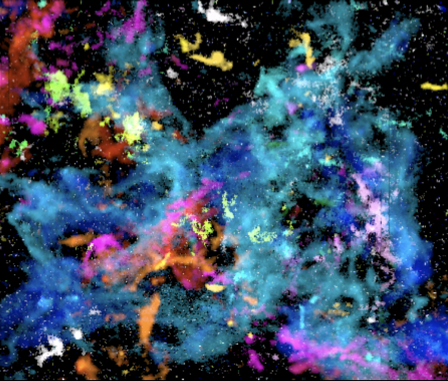
May 27, 2024 – online
Sudeshna Patra
Indian Institute of Science Education and Research (IISER), Tirupati, India
The Outer Milky Way: Laboratory for the Effects of Metallicity
Abstract
Metals play a pivotal role in shaping star formation processes, influencing gas cooling, condensation, and stellar evolution. Metallicity gradually decreases as we move outward in the Galaxy, falling between the values observed in the LMC and the inner Galactic disk. The outer region of the Milky Way presents a distinctive opportunity for investigating the impact of low metallicity on the formation of stars, where the metallicity reaches 0.3 times thesolar- metallicity. This part of the disk is an excellent proxy for other low-metallicity systems, at the same time offering easier and clearer observations of molecular clouds than nearby galaxies.
In this talk, first, I will discuss the role of metallicity in shaping protoplanetary disk evolution. We have calculated disk fraction (i.e., the percentage of stars having disks) for 10 young and sub-solar metallicity clusters in the outer Milky Way with RG range of 10-13 kpc. We find that low-metallicity clusters exhibit a lower disk fraction compared to solar-metallicity clusters. We also observe the positive correlation between cluster disk fraction and metallicity for two different age groups. We emphasize that both cluster age and metallicity significantly affect the fraction of stars with evidence of inner disks.
In the second part of the talk, I will discuss the effect of metallicity on the mass-luminosity conversion factor (𝛼𝑡𝑜𝑡) from dense gas (HCN, HCO+). Recent recognition that the mass-luminosity conversion factor from CO is not constant, but instead varies with metallicity, begs the question. We have analyzed 17 outer galaxy clouds, along with 6 inner galaxy clouds and 5 local clouds. We have found that 𝛼𝑡𝑜𝑡 (𝐻𝐶𝑁) is 3 times higher in the outer Galaxy than in the inner Galaxy after correcting for metallicity. I will also discuss how this metallicity correction contributes to explaining the relatively slow star formation in the Central Molecular Zone.
(ONLINE, Host: Agata Karska)

June 3, 2024
Clément Lauzin
Université catholique de Louvain, Belgium
High-resolution spectroscopic measurements on methanol and other reference molecules for fundamental physics, chemistry and astrophysics.
Abstract
High-resolution spectroscopic measurements performed in the laboratory enable the determination of molecular parameters and the identification of molecular species in different environments. The detection of new species and an estimation of its density allow in a second step to constrain astrophysical/chemical models. Very precise laboratory measurements may also challenge our understanding of quantum chemistry and fundamental physics.
Several high-resolution spectrometers were built recently in Louvain-la-Neuve. Those instruments work in different spectral ranges, microwave, near-infrared and UV to measure different molecular systems such as isolated molecules, neutral van der Waals complexes and molecular ions. During this talk, we will introduce a buffer gas cooling cell (20K) which is combined to a cavity ringdown spectrometer working in the near-infrared range. The set-up is illustrated in Figure 1. This instrument has been specifically designed to obtain reference measurements on complex molecules such as CH3OH probed in the overtone range. Our recent results concerning methanol will be shown and the tools developed to tackle the complex spectral signature will be detailed. Part of the complex spectral signature of methanol is also illustrated in Figure 1. Several potential upgrades of this instrument, for instance combining it with a home-built femtosecond laser to reach higher precision will be presented. Further, I will present action photodissociation spectroscopy measurements and the associated analysis concerning ionic species such as N2O+. To finish, our results concerning the study of molecular aggregation at the molecular scale will be presented.
Figure 1: The Experimental set-up combining a buffer gas cooling cell and a cavity ringdown spectrometer is presented in the upper panel. Laser light is injected in a high-finesse optical cavity and the lifetime of the photons inside this cavity is measured as a function of the laser frequency. The lower panel presents the spectrum of methanol measured in the 2OH overtone range at a temperature of 25 K.
(Cologne, Host: Oskar Asvany)
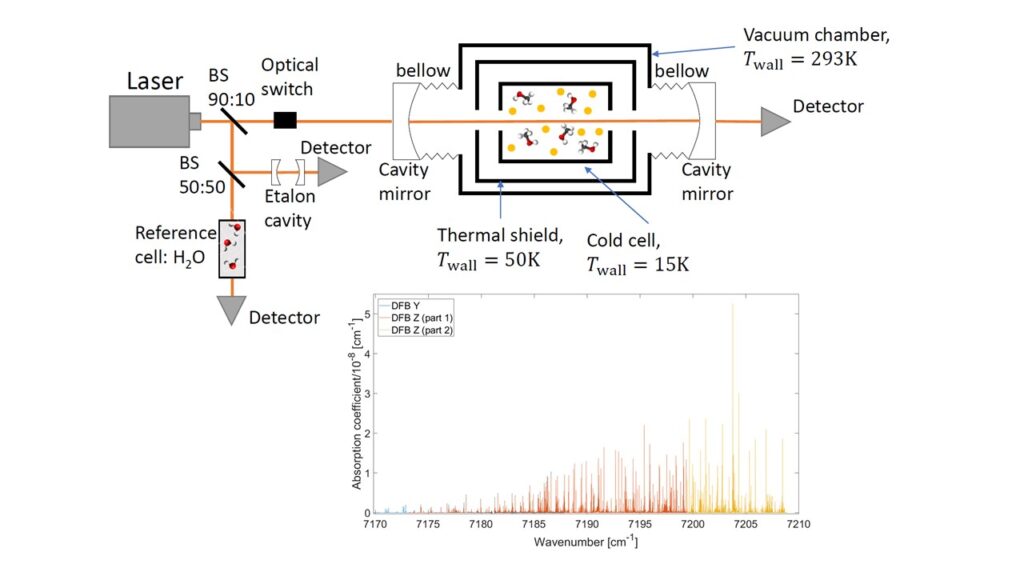
June 10, 2024
Sven Thorwirth & Luis Bonah
I. Physics Institute, University of Cologne
Spectroscopy of vibrationally excited COMs for radio astronomy
Abstract
A full understanding of the spectroscopic signatures of line-rich astronomical sources such as hot molecular cores requires dedicated studies of complex organic molecules, COMs, in the laboratory. Notoriously, COMs feature dense pure rotational spectra already in their ground vibrational states but also possess energetically low-lying vibrational modes further contributing to line density.
In addition, the parent isotopic species of COMs can be so abundant astronomically that even rare isotopic species may be observed with ease also in their vibrationally excited states. This poses severe challenges on laboratory spectroscopy.
Besides the sheer number of isotopic species deserving spectroscopic characterization, the observation and interpretation of corresponding pure rotational spectra is often (very) challenging spectroscopically.
In the course of this talk, we will show how application of specifically tailored experimental approaches and analysis software may support spectroscopic study of COMs and introduce recent studies carried out in the framework of CRC 1601.
(Cologne)
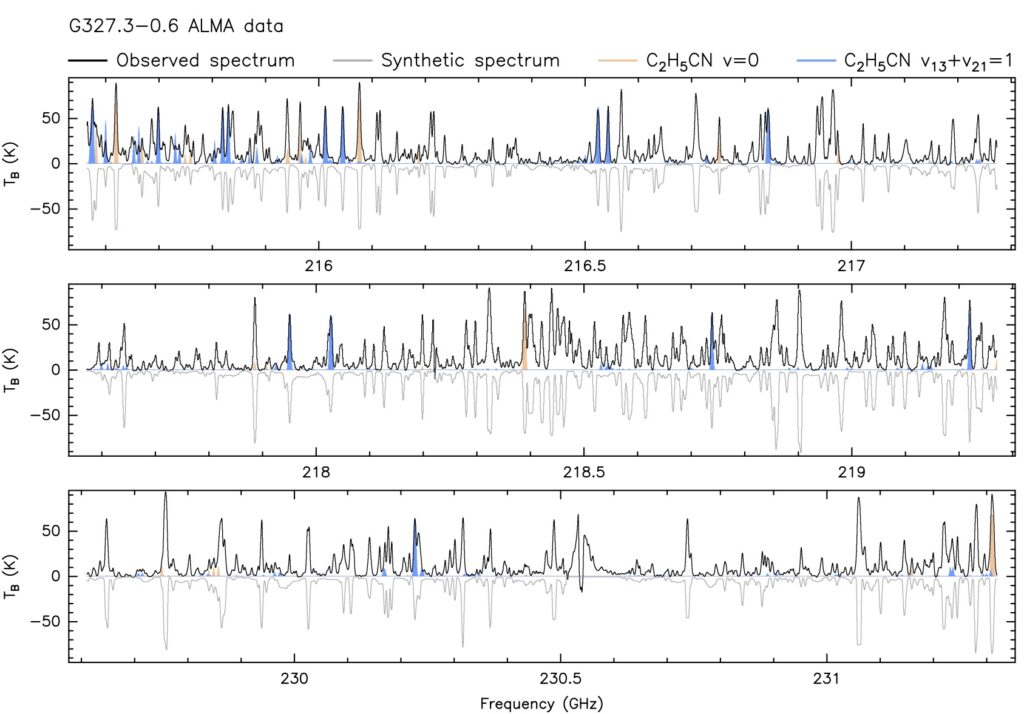
July 8, 2024
Emma Bordier
I. Physics Institute, University of Cologne
On the origin of companions around massive O-type stars: the high angular resolution view
Abstract
The high incidence of multiples and particularly close binaries among main sequence massive stars, challenges current understanding of their formation. To understand how such close systems are built, we need to obtain strong constrains on the origin of the pairing mechanism and the birth orbital properties. Different scenarios operating at different scales try to explain the formation of these multiples such as turbulent/core fragmentation, disk fragmentation (in which inward migration can occur) and the capture of an unbound body or similar dynamical effects that may happen later on in the formation process. With the ultimate goal to better understand multiplicity origins and properties at birth, I will demonstrate the crucial role of high-angular observations such as interferometry (VLTI/GRAVITY and PIONIER) and high-contrast imaging (VLT/NACO) to investigate key ingredients in massive star formation processes. The combination of these techniques provides valuable statistics on young high-mass multiple systems with physical separations ranging from 1 to 35,000 AU.
By determining physical properties such as multiplicity frequencies, mass ratios, and physical separation distributions, we can link our findings to the most promising pathways for the formation of massive multiples. In our quest to understand the origins of multiplicity, we compare our results with those of other stellar populations across different mass regimes and evolutionary stages, within a consistent parameter space. Finally, in the context of the SFB1601, this talk will also highlight some of our team’s latest and early results on multiplicity in young massive stars.
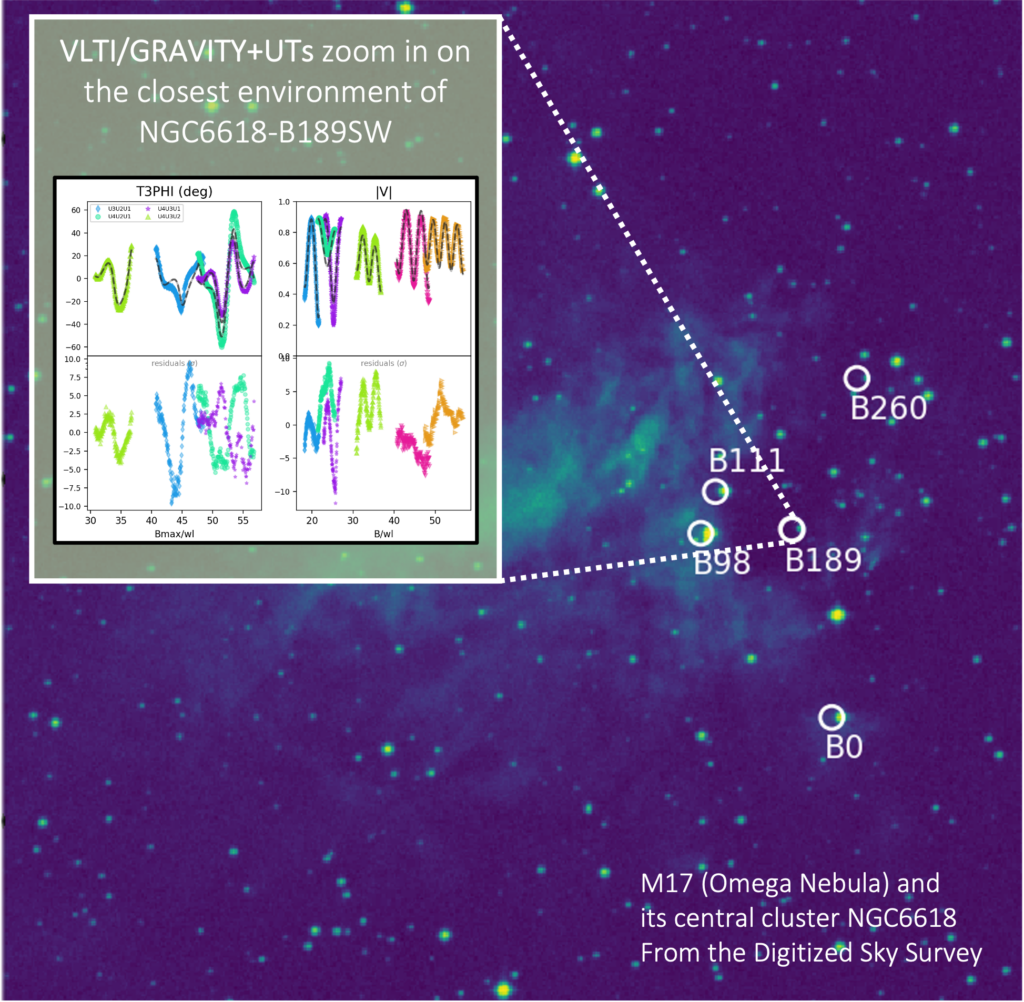
July 15, 2024
Bérenger Gans
Institut des Sciences Moléculaires d’Orsay, CNRS & University of Paris-Saclay, France
Investigation of interstellar radical photoionization by VUV photoelectron spectroscopy
Abstract
Despite their significance in astrophysical environments, a large number of cations of free radicals are spectroscopically poorly characterized in the gas phase, due to experimental challenges. Photoionization spectroscopy holds great potential in this area, though it remains difficult because it requires efficient radical sources and tunable VUV radiations with high-enough spectral resolution.
In this talk, I will describe two different techniques employed to tackle this subject: threshold photoelectron spectroscopy (TPES) coupled with synchrotron radiation, and pulsed-field-ionization zero-kinetic-electron photoelectron spectroscopy (PFI ZEKE PES) coupled with a tunable VUV laser.
In the first part, I will briefly present results on carbon- and/or silicon-bearing radicals using a flow tube reactor coupled with the DELICIOUS 3 photoelectron/photoion coincidence spectrometer of the DESIRS beamline at SOLEIL French synchrotron facility.
In the second part, I will introduce a versatile laser setup that we recently built at ISMO to perform PFI-ZEKE spectroscopy of free radicals, allowing either large spectral coverages with vibrational resolution (~3 cm-1) or narrow spectroscopic investigations with rotational resolution (<0.1 cm-1). Results on the CH3 radical that confirmed the recent detection by JWST of the methyl radical cation (CH3+) in a protoplanetary disk within the Orion star-forming region will be presented.
(Cologne, Host: Oskar Asvany)

October 08, 2024
Ugo Jacovalla
Institut des Sciences Moléculaires d’Orsay, CNRS & University of Paris-Saclay, France
Hunting for molecular ions in space
Abstract
Over 300 different molecular species have been identified in space, with approximately 90% of these discoveries made through radio astronomy, utilizing the rotational spectra at radio wavelengths. However, radio astronomy faces inherent sensitivity limitations, especially when detecting large, symmetrical molecules like C60. For such molecules, we rely on their vibrational (infrared, IR) and/or electronic (near-IR/visible) spectral signatures for identification. Interestingly, only three large molecules—C60, C60+, and C70—have been detected using IR and near-IR spectral features. A significant knowledge gap remains, as the next largest molecules identified in space contain only 11 carbon atoms (e.g., HC11N, C10H7CN). In this context, I will present the experimental toolbox I have developed to address this gap, focusing on large carbon-rich molecular ions and using the diffuse interstellar bands as a proxy.
Cologne, Host Stephan Schlemmer

October 15, 2024
Alexey Potapov
Analytical Mineralogy group, Institute of Geosciences, Friedrich Schiller University, Jena
Laboratory Astrophysics and Solid-state Astrochemistry
Abstract
Laboratory astrophysics bridges studies of atomic and molecular species in interstellar and circumstellar media and planetary atmospheres conducted through astronomical observations, and studies of these species or their analogues that we can create in the laboratory and probe in situ. Many laboratory experiments are devoted to studies of solid-state or surface reactions that lead to a greater complexity (comparing to the gas phase) of molecular species. Complex organic and prebiotic molecules can be formed through surface reaction pathways linking astrophysics/astrochemistry with the big scientific question – the origin of Life on Earth.In my talk, I will provide a brief introduction to laboratory astrophysics and to cosmic surfaces, will present a new view of cosmic dust grains, and will discuss results of experiments on the catalytic formation of molecules thereon.
Schematic figure showing dust grains (in grey) mixed with ice molecules (in blue) and the main sources of their processing in astrophysical environments (from Potapov et al., Phys. Rev. Lett., 2020, 124,221103).
(Cologne, Host: Stephan Schlemmer)
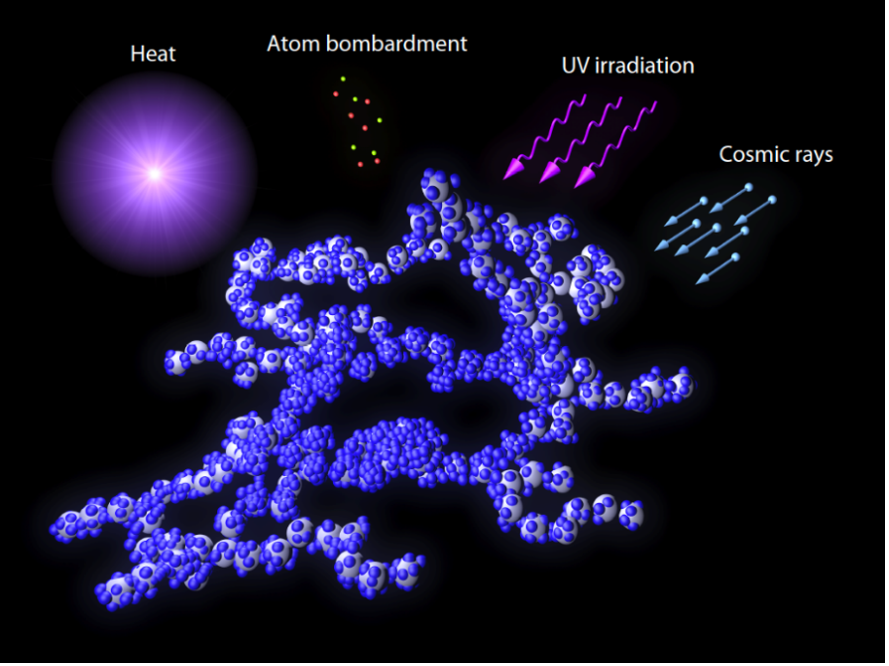
October 22, 2024
Susanne Pfalzner
SFB1601/ Forschungszentrum Jülich
A perfect encounter: The flyby that possible shaped the outer solar system
Abstract
In recent years, surveys have discovered many sub-planet-sized objects in the Solar System’s outer reaches, beyond Neptune’s orbit. These trans-Neptunian objects (TNOs) hold vital clues to understanding the Solar System’s formation. Unlike the planets, these TNOs mostly orbit the Sun on inclined, eccentric orbits. While the innermost TNOs may have been ejected onto these orbits while interacting with the planets, the most distant are too far away. The explanation for their current orbits is likely an external force. Here, I’ll show that a specific close flyby of another star can explain the TNOs dynamical properties of the known TNOs on a quantitative level. I will also illustrate how such a flyby can provide an explanation for the irregular moons of the giant planets and the Trojan asteroids that share the orbits of the planets.
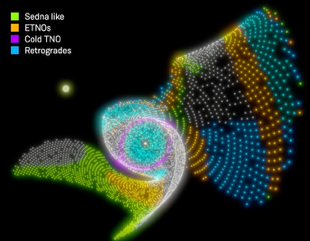
October 29, 2024
Gregory Walsh
DARK Cosmology Centre, Niels Bohr Institute, University of Copenhagen
The Nature of Accretion State Changes: Changing-look AGN and VLBI
Abstract
Active Galactic Nuclei (AGNs) show a plethora of variability signatures across all observable timescales and the electromagnetic spectrum. Multi-epoch, large-area surveys are finding an increasing number of AGNs with variable photometric and/or spectroscopic properties on exceedingly short timescales, many of which appear to correspond to a change in the accretion state of the AGN, defying expectations determined from simple scaling relations of X-ray binary systems. These changing-look AGNs are quintessential laboratories to investigate the physics of accretion at the highest mass scale and to probe the interdependence of accretion-driven phenomena in AGNs. In this talk, I will present the unique power of Very Long Baseline Interferometry (VLBI) towards constraining the physical mechanisms driving accretion state changes in changing-look AGNs and, more generally, how these exotic objects can be used as tools to understand the putative disk-jet connection in accreting systems across the mass scale.
Cologne, Host: Tatiana Rodriguez / Peter Schilke

November 5, 2024
Stephan Schlemmer
SFB1601/ I. Physics Institute, University of Cologne
Cologne Laboratory Astrophysics – now and then
Abstract
In our Cologne laboratories we are interested in the role that molecules play in the astrophysics context. High-resolution spectroscopy is the main focus of this work which is a trademark of our institute for decades. In this presentation I will highlight three ingredients of our work which make molecular astrophysics strong. First, the CDMS database is the most prominent link to astrophysics.
Second, the development of new laboratory techniques allows us to study new molecules desired by astrophysics. Third, experimental spectra of several molecules challenge current spectroscopy models which we try to extend or revise.
Based on examples from our current research I will address possible future directions.
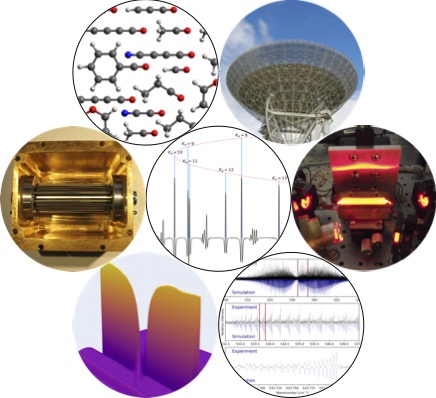
November 12, 2024
Alvaro Hacar
Department of Astrophysics, Univ. of Vienna (AT)
A physical description of the filamentary ISM
Abstract
The advent of large-scale millimeter line and FIR continuum maps have revealed the filamentary nature of the Interstellar Medium (ISM). Filaments dominate the gas structure inside molecular clouds, promote the formation of stars in them, and drive their chemical evolution. Still, the origin and evolution of these elongated gas structures are matters of strong debates within the star formation community. During the last decade a large observational effort has been devoted to identify and characterize large filament populations across the Milky Way. High resolution studies highlighted the complex gas kinematics inside filaments, typically exhibiting a rich hierarchy substructure of sub-filaments forming dense networks. These results are transforming our current models for low- and, particularly, high-mass star formation. During my talk I will present some of our latest results on the study of the filamentary substructure of molecular clouds as well as discuss future challenges and avenues on this field.
Cologne, Host Stefanie Walch-Gassner/Masato Kobayashi
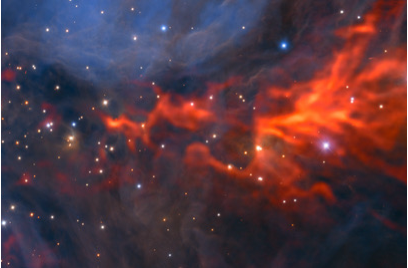
November 26, 2024
Nuria Marcellino
Observatorio Astronómico Nacional (IGN), Madrid, Spain
Observatorio de Yebes (IGN), Yebes, Guadalajara, Spain
QUIJOTE and SANCHO: unveiling the molecular content of the TMC-1 cloud
Abstract
QUIJOTE and SANCHO are two observational projects at the Yebes 40m radiotelescope, which target the cold and dense core TMC-1. QUIJOTE is an ultra deep spectral line survey in the Q band (31-50 GHz), with current sensitivities between 0.08-0.2 mK at the observed frequencies. Since 2020, QUIJOTE has allowed the discovery of more than 60 new molecules in space, together with the detection of many isotopologues of known abundant species. Among the new discoveries, it is remarkable the detection of several large hydrocarbons and cyclic molecules, unexpected in such a cold cloud. However, the QUIJOTE data is incomplete, since we lack information on the spatial distribution of these molecules, which can help to constrain their chemical origin. SANCHO covers the same frequencies as QUIJOTE over an area of 4’x4′ around the cyanopolyynne peak of TMC-1, with sensitivities of 2-4 mK across the band. Thus, like the characters imagined by Miguel de Cervantes, SANCHO is QUIJOTE’s loyal companion in pursuit of understanding the molecular complexity of the TMC-1 cloud. In this talk, I will present the latest and most significant results of these two projects. The impact of QUIJOTE and SANCHO’s results have been possible thanks to the full instantaneous coverage and the high sensitivity of the 40m Q band receiver. I will also show the characteristics of the Yebes 40m telescope and the upcoming upgrades, which might be available in the next call for proposals of the Yebes Observatory in December.
Figure credits: Background image: Taurus Molecular Cloud, Grand Mesa Observaroty, Terry Hancock and Tom Masteron.
(Cologne, Host: Wonju Kim)
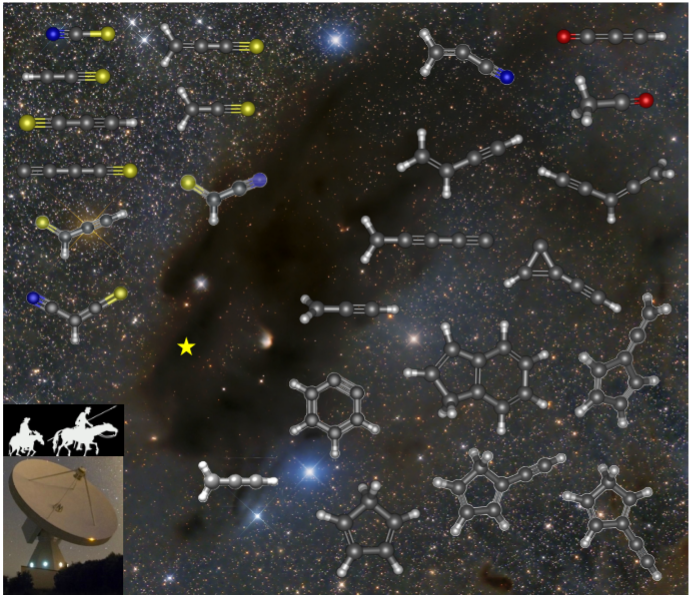
December 3, 2024
Friedrich Wyrowski, Sudeep Neupane
SFB1601/ Max Planck Institute for Astronomy, Bonn
Physical conditions and gas kinematics from giant molecular clouds to clumps scales
Abstract
Giant molecular clouds complexes (GMCCs) are the main sites of star formation in the galaxy and harbour large number of molecular clumps/cores at various evolutionary stages typically embedded within the filaments. To understand the star formation processes in the GMCCs exhibiting different morphologies and environmental conditions, we designed a Apex LAsMA survey of GALactic giant molecular cloud complexes (LASMAGAL) in 12/13CO3-2 molecular lines toward a sample of the most prominent star forming GMCCs in the southern Galactic plane. In the first part of the talk, we will present an overview of the LASMAGAL survey, and show some results. In particular, we will highlight the survey results towards the NGC 6334 filamentary complex in which we investigated detailed gas emission morphology and kinematics using the LAsMA 12/13CO(3-2) data. In the second part of the talk, we will focus on the follow up Apex observations toward a selected candidate cluster forming molecular clumps and present clump to core scale properties (physical conditions and gas kinematics), important to understand (high-mass) star formation processes in the Galaxy.
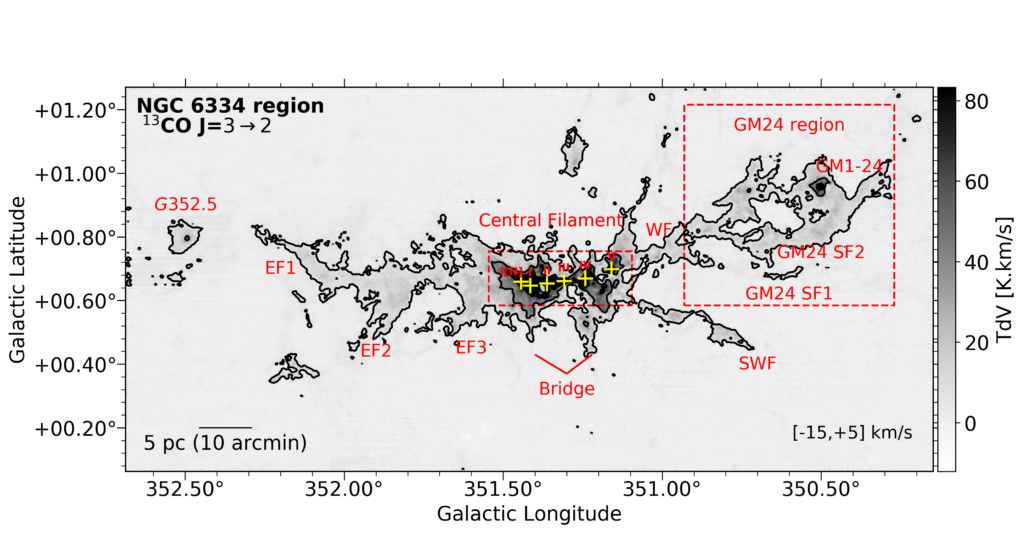
December 10, 2024
Daniel Obenchain
Georg-August-Universität Göttingen, Institut für Physikalische Chemie
The laboratory detection of molecular hydrogen complexes with aromatic rings: non-trivial differences in ortho/para hydrogen complexation patterns
Abstract
As many unsubstituted polycyclic aromatic hydrocarbons (PAHs) and smaller aromatic rings do not possess a permanent electric dipole moment, the search for and detection of substituted PAHs in the interstellar medium has dominated recent literature. Substitutions with cyano-groups are great targets as they often imbue a large molecular dipole moment. Detected molecules include single aromatic rings like benzonitrile, but more recently the PAH systems of cyano-naphthalene and cyano-pyrenes have been detected in TMC-1. Our benchmarking and rotational spectroscopy group has been interested in the fundamental binding of molecular hydrogen to model surfaces that mimic the real interactions of H2. As hydrogen very likely to encounter ice-grains containing cyano-PAHs in the ISM, we have been adapting our spectroscopic targets towards aromatic systems already detected in the ISM.
In this talk, we will explore the formation of molecular hydrogen complexes with aromatic rings using rotational spectroscopy. A primary focus of the talk will be on benzonitrile-H2. We discuss the binding of not only molecular hydrogen, but also the minor isotopologues HD and D2, and heavier substitutions of benzonitrile. Also observed are the differences in binding preference in our experiment, where the favorability of binding to ortho-H2 is favored over para-H2and also depends on the relative concentration of hydrogen in the experiment.
Cologne, Host: Stephan Schlemmer
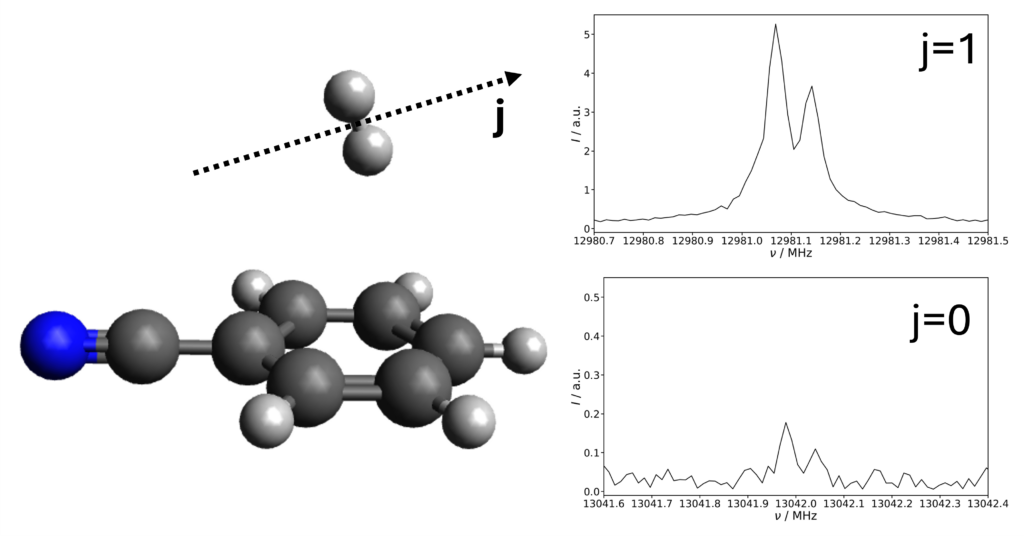
December 17, 2024
Mallory Thorp
Argelander Institute for Astronomy
Are all starbursts equal? The role of galaxy mergers in shaping unique star-forming conditions
Abstract
Galaxy-galaxy mergers are transformative events, dramatically changing the star formation, gas dynamics, and chemical properties of their constituents. Evidence from both simulations and integrated galaxy studies reveal how merger-induced gas inflows can both dilute metallicity and trigger episodes of heightened star formation activity. However, feedback processes resulting from coalescence (e.g., merger triggered active galactic nuclei) can also lead to rapid quenching of star formation, making mergers the ideal environment for exploring the extremes of star formation in the local universe. We identify over 1900 interacting galaxies from the Mapping Nearby Galaxies at Apache Point Observatory (MaNGA) integral field spectroscopy (IFS) survey, allowing us to study the star-formation and metallicity properties at kpc-scale for an unprecedented number of mergers. Unlike previous case-studies of mergers, a sample of this size allows for detailed exploration of how global galaxy properties and qualities of the interaction – such as interaction progression and mass ratio – shape localized changes in these key evolutionary features. Central star formation appears most tightly linked to interaction stage, with post-mergers triggering a central starburst twice as powerful as that in isolated starburst galaxies. The ~10,000 galaxy sample provided by MaNGA allows us to compare these post-merger starbursts to isolated galaxies of near identical properties to confirm such changes can only result from the interaction. We additionally utilize CO-derived molecular gas surface density maps for a subset of these mergers from the ALMA MaNGA QUEnching and STar-formation (ALMaQUEST) survey, allowing us to determine whether gas inflows power these central starbursts, and why some rare post-merger galaxies lack a central starburst. Pulling insights from both star formation, gas, and gas-phase metallicity in the context of mergers unveil surprising complexities in the interplay of physical processes driving galaxy evolution.
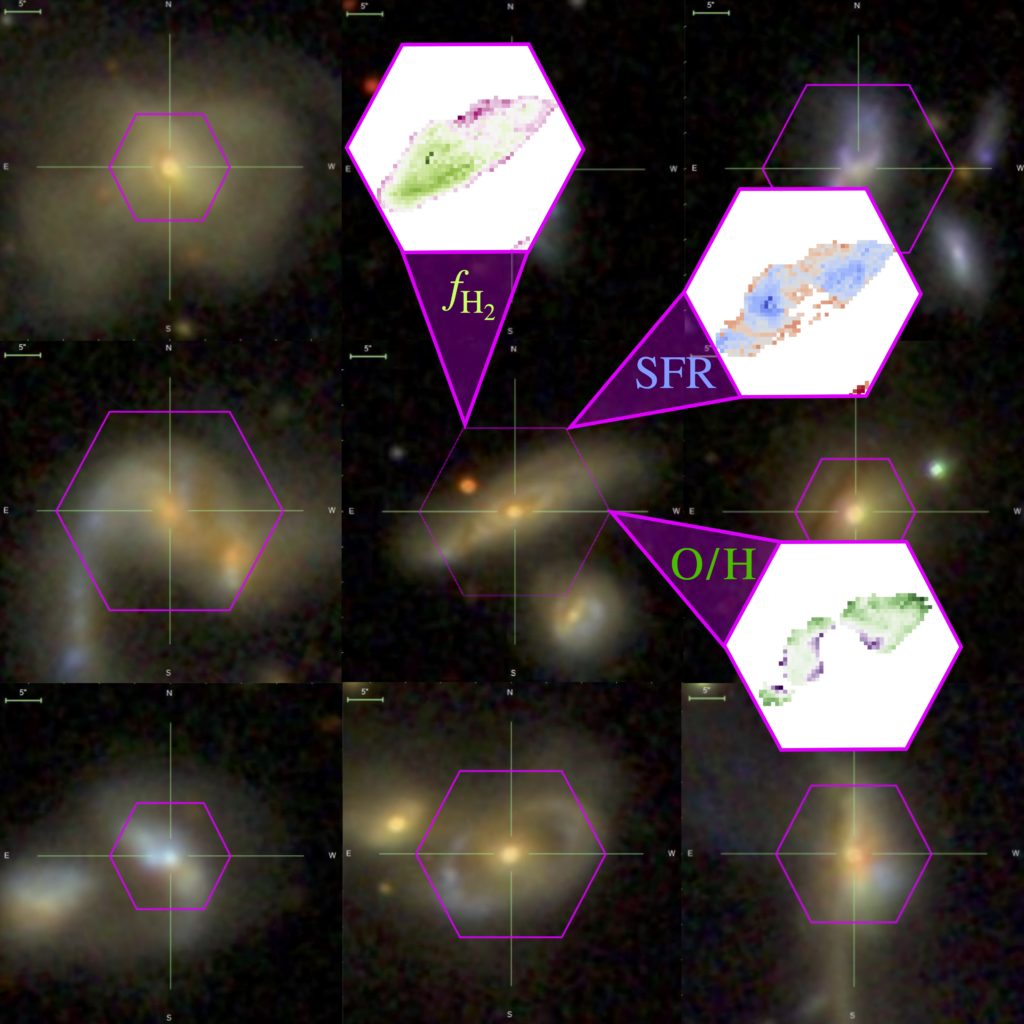
January 7, 2025
Kai Polsterer
Heidelberg Institute for Theoretical Studies
From Supervised to Unsupervised ML: lessons learned from learning machines
Abstract
The amount, size, and complexity of astronomical data-sets is growing rapidly in the last decades. Now, with new technologies and dedicated survey telescopes, the databases are even growing faster. Besides dealing with poly-structed and complex data, sparse data has become a field of growing scientific interest. By applying technologies from the fields of computer sciences, mathematics, and statistics, astronomical data can be accessed and analysed more efficiently.
A specific field of research in astroinformatics is the estimation of the redshift of extra-galactic sources, a measure of their distance, by just using sparse photometric observations. Observing the full spectroscopic information that would be necessary to directly measure the redshift, would be too time-consuming. Therefore, building accurate statistical models is a mandatory step, especially when it comes to reflecting the uncertainty of the estimates. Statistics and especially weather forecasting has introduced and utilized proper scoring rules and especially the continuous ranked probability score to characterize the calibration as well as the sharpness of predicted probability density functions.
After presenting how this work led from well calibrated redshift estimates to an improvement in statistical post-processing of weather forecast simulations, an example of interdisciplinarity in data-science, we continue with unsupervised machine learning techniques. We start with the challenge of classifying morphologies of radio-galaxies, talk about star-formation history in LMC, discuss the difficulties in representing time-series, and end with a discussion on novel explorative science platforms for e.g. spectral data. In this part of the talk, we show-case how machine learning can be used as a machinery of discovery to access large data-sets. Several examples are presented to provide examples for the individual researchers in the audience.
Cologne, Host Isabelle Breloy
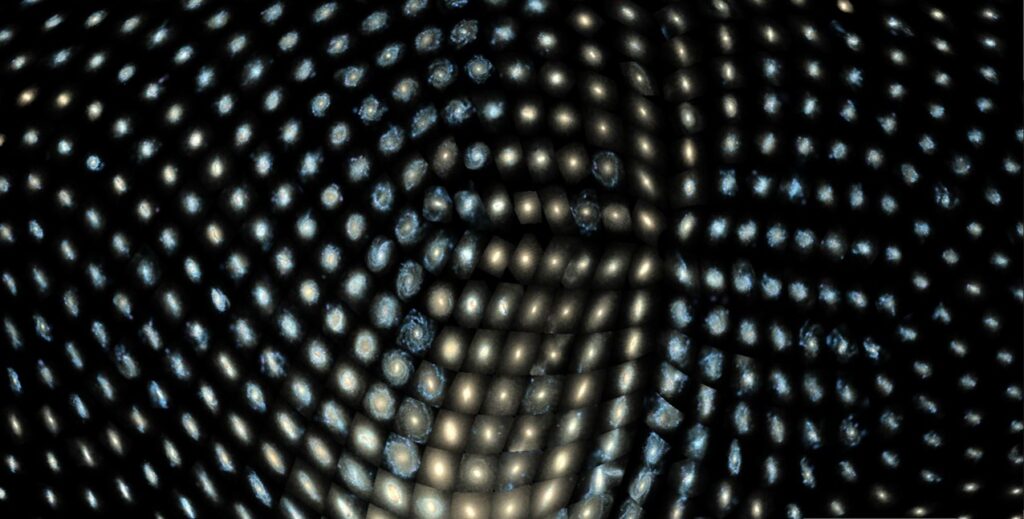
January 14, 2025
Monica Valencia-Schneider, Christof Buchbender
SFB1601 / RRZK & I. Physics Institute, University of Cologne
The CCAT Data Center
Abstract
The CCAT consortium is currently constructing the Fred Young Submillimeter Telescope (FYST) on Cerro Chajnantor in the Atacama Desert of Chile, at an altitude of 5600 meters. First light for the telescope is anticipated in 2025. The consortium comprises Cornell University, the University of Cologne, the University of Bonn, the Max-Planck-Institut für Astrophysik, and the Canadian Atacama Telescope Consortium. At the outset, FYST will be equipped with two instruments: Prime-Cam, a modular receiver featuring up to seven science modules, and the CCAT Heterodyne Array Instrument (CHAI), which will operate in the 430–510 GHz and 800–835 GHz frequency ranges. Collectively, the consortium will draw on its expertise to investigate a variety of astrophysical topics, including star formation, the evolution of the interstellar medium in the Milky Way and nearby galaxies, early Universe galaxies, and cosmology.
Over the telescope’s first five years of operation, Prime-Cam and CHAI are expected to generate approximately 5 petabytes of raw data. To handle these data, the University of Cologne is establishing the “CCAT Data Center” at its Regional Computing Center (RRZK). This center is currently developing pipelines for data transfer, storage, reduction, and quality assessment. For processing, the newly installed RAMSES high-performance computer at the University of Cologne will be utilized. We will manage the entire data lifecycle, from initial project definition through observations, data reduction, and the creation of science-ready data products and scientific publications, all within a single database. This integrated approach will allow us to monitor progress and make any necessary adjustments throughout the process. A web frontend will provide efficient data access and insights into the telescope’s status and associated projects.
In this talk, I will briefly introduce the CCAT project and its scientific objectives before focusing on the “CCAT Data Center.” I will discuss the architecture for data transfer, management, processing, and accessibility via a web frontend. Additionally, I will address the challenges we face, including the data transfer from Chile to Cologne and the significant processing requirements of some projects.
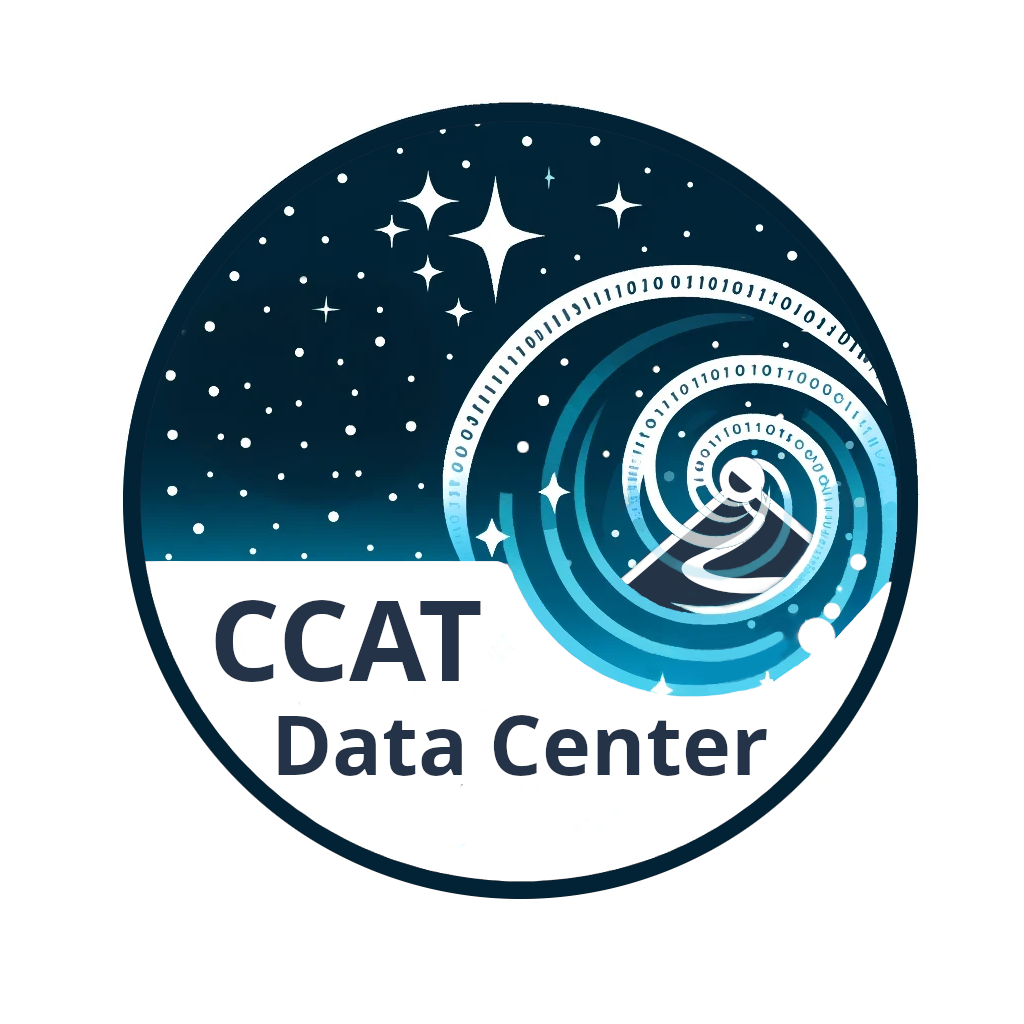
January 28, 2025
Florian Peißker
SFB1601 / I. Physics Institute, University of Cologne
To be or not to be: a putative IMBH in the close vicinity of the supermassive black hole SgrA*
Abstract
The discrepancy between the age of the Universe and the timescales associated with the accretion rate of supermassive black holes (SMBHs) remains a key astrophysical mystery. As a major building block of our Universe, this lack of knowledge about the formation of SMBHs may reveal fundamental physical processes that can help to understand the evolution of massive galaxies discovered after the Big Bang with the James Webb Space Telescope (JWST). As an evolutionary link between stellar-mass black holes and SMBHs, intermediate-mass black holes have been proposed to resolve the before mentioned discrepancy. However, only about 300 candidate intermediate-mass black holes (IMBHs) have been discovered in X-ray surveys. Only a fraction of these IMBHs can be classified as confirmed. Interestingly, an IMBH has been discovered at a distance of 0.1 pc from our SMBH, Sgr A*. Here, I will discuss the results of this finding and present alternative interpretations of the IMBH.
